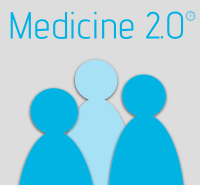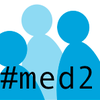In the past few years we have seen the rapid evolution of new tools and programming techniques collectively called “Web 2.0 toolsâ€, which facilitate the development of collaborative and user-friendly Web applications.
Typically, the Web 2.0 is a term which refers to a) improved communication between people via social-networking technologies, b) improved communication between separate software applications ("mashups") via open Web standards for describing and accessing data, and c) improved Web interfaces that mimic the real-time responsiveness of desktop applications within a browser window. Semantic web applications (sometimes called Web 3.0) and 3D environments (Second Life) can also be seen as second generation Web technologies.
These technologies have led to a flurry of new applications and speculation on their potential to revolutionize health care and the entire spectrum of health and medicine – from consumer-led preventive medicine, home care, to clinical care. This coincides with a strong push towards personal health records, with major players such as Microsoft and Google entering the scene. High-profile takeovers and valuations of companies such as YouTube or Facebook also have led to a flurry of investment activities - Venture Capitalists are once again investing in Web start-ups, but much of the linguistics and hype is reminiscent of the Web 1.0 bubble in the late 90ies.
As academics, we have the responsibility to look beyond the hype, and to dissect what works and what doesn’t.
As the leading peer-reviewed journal in eHealth, JMIR, together with a number of sponsoring organizations, is currently preparing the first academic international "Medicine 2.0"TM conference on Sept 4th/5th 2008 in Toronto (MaRS Conference Centre). (to receive more information about this conference please register with this site). Note that with the term “medicine†we do not necessarily mean clinical medicine, but also preventive medicine, and the part of “medicine†which is the consumers’ responsibility.
This cutting edge conference will bring together academics and business leaders and is hoped to catalyze new collaborations between academia, health providers, and the private sector.
We envision this to be an annual conference, with peer-reviewed contributions, panels, and invited speakers, focussing on “next generation medicineâ€, which incorporates ideas of collaboration and consumer empowerment.
Typically, the Web 2.0 is a term which refers to a) improved communication between people via social-networking technologies, b) improved communication between separate software applications ("mashups") via open Web standards for describing and accessing data, and c) improved Web interfaces that mimic the real-time responsiveness of desktop applications within a browser window. Semantic web applications (sometimes called Web 3.0) and 3D environments (Second Life) can also be seen as second generation Web technologies.
These technologies have led to a flurry of new applications and speculation on their potential to revolutionize health care and the entire spectrum of health and medicine – from consumer-led preventive medicine, home care, to clinical care. This coincides with a strong push towards personal health records, with major players such as Microsoft and Google entering the scene. High-profile takeovers and valuations of companies such as YouTube or Facebook also have led to a flurry of investment activities - Venture Capitalists are once again investing in Web start-ups, but much of the linguistics and hype is reminiscent of the Web 1.0 bubble in the late 90ies.
As academics, we have the responsibility to look beyond the hype, and to dissect what works and what doesn’t.
As the leading peer-reviewed journal in eHealth, JMIR, together with a number of sponsoring organizations, is currently preparing the first academic international "Medicine 2.0"TM conference on Sept 4th/5th 2008 in Toronto (MaRS Conference Centre). (to receive more information about this conference please register with this site). Note that with the term “medicine†we do not necessarily mean clinical medicine, but also preventive medicine, and the part of “medicine†which is the consumers’ responsibility.
This cutting edge conference will bring together academics and business leaders and is hoped to catalyze new collaborations between academia, health providers, and the private sector.
We envision this to be an annual conference, with peer-reviewed contributions, panels, and invited speakers, focussing on “next generation medicineâ€, which incorporates ideas of collaboration and consumer empowerment.
Medicine 2.0® is happy to support and promote other conferences and workshops in this area. Contact us to produce, disseminate and promote your conference or workshop under this label and in this event series. In addition, we are always looking for hosts of future World Congresses. Medicine 2.0® is a registered trademark of JMIR Publications Inc., the leading academic ehealth publisher.

This work is licensed under a Creative Commons Attribution 3.0 License.




